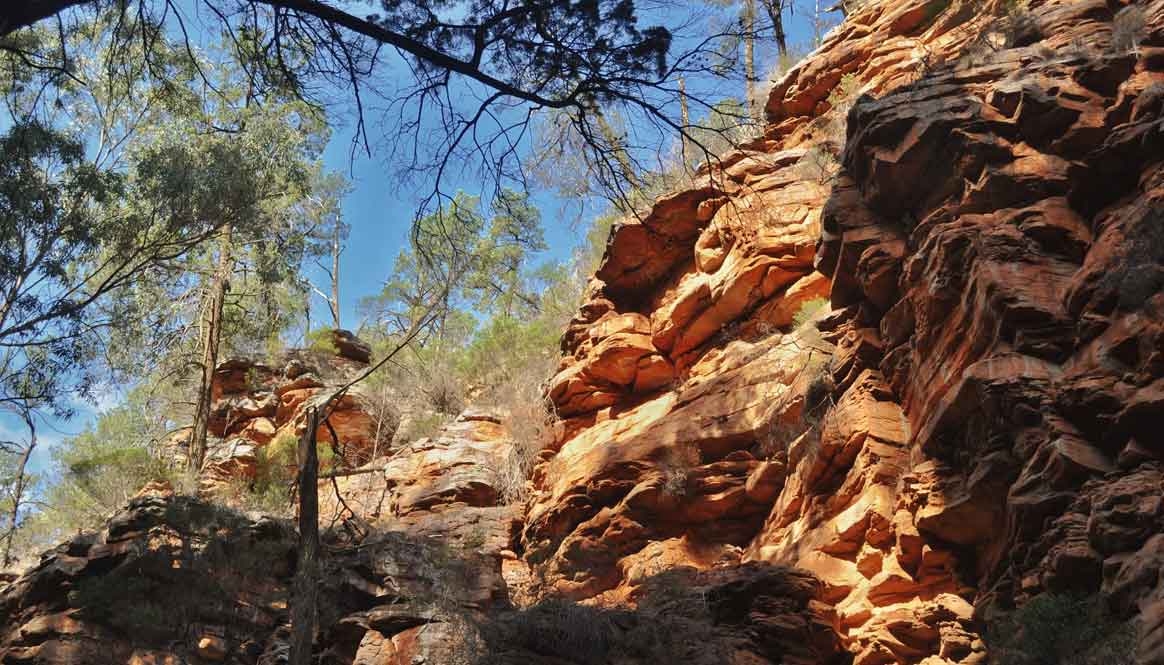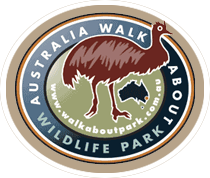
The animals in our sanctuary, our #1 priority!
Our duty is first to the animals living in our sanctuary, including
- uncountable numbers of wild-occurring wildlife in our 170 acres (80 fox-proof and 90 unfenced acres), and
- around 150 introduced and free-ranging semi-dependent native animals in the fox-proof bushland, and
- around 250 wholly dependent native and farm animals with special needs in enclosures.
Every animal that lives with us does so because we are the best home, and a good home, for that animal.
We get asked almost daily to take in new animals. Many are unreleasable wildlife, rescued and nursed back to health with the intention that they would one day live wild again, but found over time to be unreleasable. However, most of the requests we get are from members of the public asking us to take on their, or someone else’s, pet. Most often these are birds or dingoes or turtles. Sadly, although we can offer advice, and we take as many as we can, in most instances we can’t say “yes”.
The reason we (usually) can’t say “yes” is our first priority is to look after the animals that already live with us.
Our resources are limited, both in terms of suitable space for different species and individuals, and our ability to obtain what they need. In 2020 we looked after around 250 animals. 4 years later, in 2024, this number had gone up to almost 400. Without government or other funding to do the work we do, we are reliant almost solely on “visitor funding” from tickets and shop sales. However, we have learned to be extremely resourceful and punch way above our weight in terms of the numbers of animals in our care, and what we do for them.
With limited resources, we have a responsibility to not overextend ourselves to the point that the animals that trust us to care for them don’t, in every single instance, get everything they need from us.
For the sake of our animals, and all the animals that will need us in the future, we must be sustainable.
We must be
- environmentally sustainable,
- financially sustainable and,
- most importantly, we must have a sustainable team of people who care and who have the necessary knowledge and skills to care for the animals and meet their needs.
Where do the animals in our sanctuary come from?
Every animal in our wildlife sanctuary lives with us because our sanctuary is the best, and a good, home for each individual animal and its species. The animals come from the following situations:
1: Wild wildlife living in our wild bushland.
2: Unreleasable rescued wildlife that can’t return to the wild because
- the animal has a disability affecting its ability to find food or shelter, or to escape from predators.
- the animal has a disability that will require monitoring and possible veterinary intervention through its lifetime.
- the animal is overly “humanised” and will seek out humans (with the dangers of dogs and cats and cars) if released.
- the animal has lost, or never developed, the wild abilities it needs to survive in the wild.
- the animal’s wild home has been altered e.g. due to bushfires or weather-pattern changes or land clearing, so it no longer provides the food/shelter/water/etc. that the animal needs.
3: The naturally occurring offspring of all the animals, while we monitor and manage breeding to balance
- avoiding over-breeding, in-breeding and excessive pressure on our wild habitat, which would be bad for the individual animals and their species, while
- allowing our animals to have a sustainable normal multi-generational social structure conducive to happy well-adjusted animal communities.
4: Animals the authorities have confiscated from illegal circumstances including smugglers and cruel conditions
- mostly reptiles, such as lizards intercepted at Australia’s border posts, crammed in suitcases or boxes on their way overseas as exotic pets or for traditional medicine.
5: Animals in ‘breed for release’ rewilding programs
- Tasmanian devils – we are a retirements home for old devils that other institutions don’t have space for
- Spot tail quolls – we care for individual animals (they don’t like friends and kill each other if co-housed) that are not currently being called on for breeding
- Bilbies – for nearly 20 years we have been breeding bilbies for release back into the wild in Queensland and West Australia to help wild populations to recover
- Eastern quolls – we care for small social groups of animals that are not currently being called on for breeding
- Parma wallabies – we are working with WWF (World Wildlife Fund) and NSW National Parks to improve the genetic diversity of the species and to release animals into other fox-proof sanctuaries in NSW
- Grey-headed flying foxes – we work with Sydney Bats (Kurin-Gai Bat Society) to care for a multi-generational family of bats and to take them into human communities across NSW to teach about the critical role that this keystone species plays in sustaining our gum trees and all the animals, like koalas, that depend on eucalypt trees for their survival.
- Brush-tail rock wallabies – we work with NSW National Parks to give these animals the opportunity to learn how to be wild in our fox-proof wild habitat sanctuary, before being released in the Blue Mountains National Park to help their species recover after the devastating 2020 bush fires destroyed, and changed forever, more than 70% of their habitat.
6: Animals whose humans realise they can’t look after their (usually) loved pets
- Australian cockatoos and exotic parrots orphaned from their human families because they live up to 90 years, and their surviving human “relatives” don’t want them.
- dingoes, after people realise (too late) that dingoes are not dogs and cannot be domesticated and integrated into their household, even by the most experienced human dog trainers.
- reptiles, rabbits and guinea pigs because their humans thought they’d make such cute or interesting pets, and were not prepared for how much attention or work the animal would need.
Contact Us
Walkabout Wildlife Sanctuary
1 Darkinjung Road
cnr Peats Ridge Road
Calga, NSW 2250
Australia
Phone
(o2) 4375 1100 Australia
+61-2-43751100 International
info@walkaboutpark.com.au
Staff Log-in
Follow us on Facebook
Opening Times
We are Open
We are OPEN every day
We are NEVER closed
Gates open at 9:30am
Gates close at 5:00pm
[Christmas early close 3pm]
Online Discounts
You can buy tickets when you arrive. But if you pre-purchase online, your entry tickets are cheaper. Click here to pre-purchase your tickets online.
